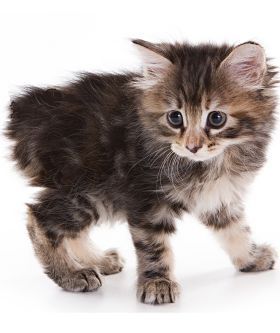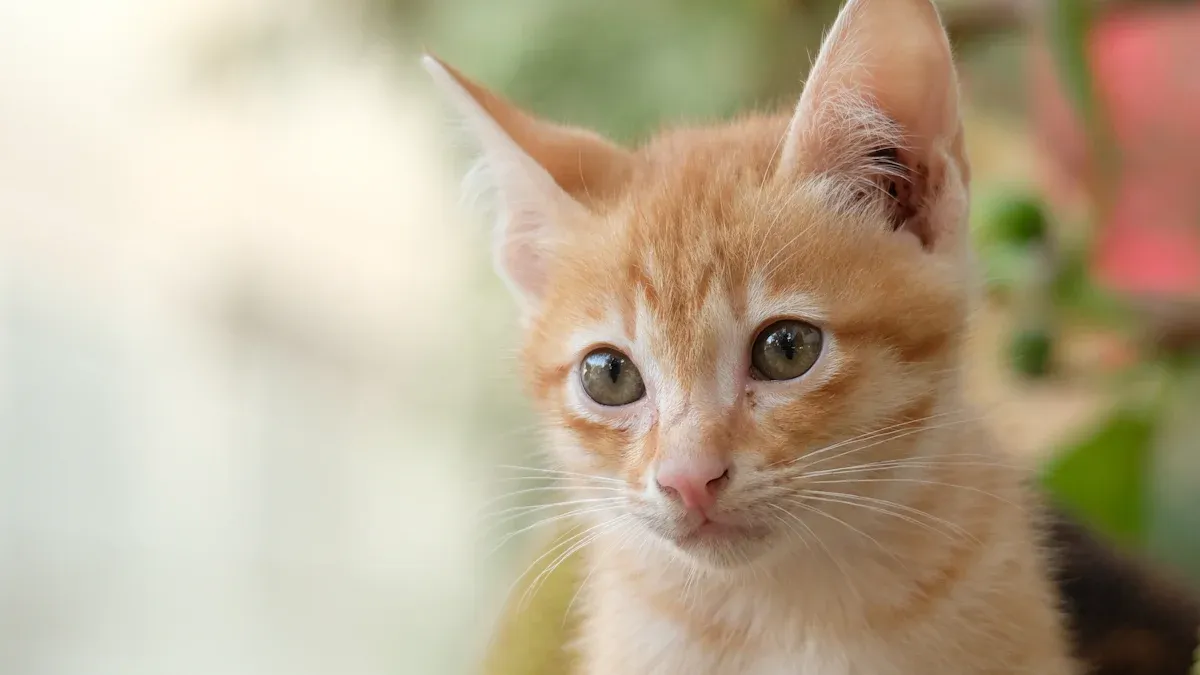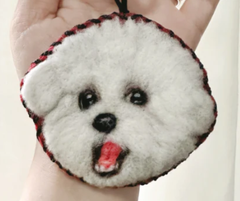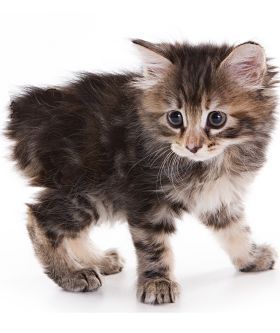Breeding Manx Cats Safely What Experts Say

When you start breeding manx cats, you need to think about more than just their looks. Experts say you should always put the health and happiness of each manx first. Every manx carries a special gene that can cause health problems, sometimes very serious ones. Some manx cats live 12 to 14 years, but others may not reach their first birthday because of genetic defects.
Cat Breed |
Average Lifespan |
|---|---|
Manx |
12 - 14 years |
Maine Coon |
12 - 15 years |
Experts recommend you focus on health checks, genetic testing, and good care for every manx. This helps you avoid risky pairings and support the welfare of each cat.
Key Takeaways
Always put the health and happiness of Manx cats first. Regular vet checks and genetic tests help stop big health problems.
Do not breed two tailless Manx cats together. This can cause kittens that do not live and more genetic problems.
Pick healthy breeding pairs with strong genes. Choose cats with good behavior and the classic Manx look for better results.
Watch pregnant Manx queens carefully. Give them good food and keep their space clean and calm to help them and their kittens stay healthy.
Teach new owners how to care for Manx cats. Show them why vet visits and special care are important for a happy, healthy cat.
Breeding Manx Cats: Genetics & Risks
Manx Gene Overview
Manx cats have special tails. Some have no tail, and some have a short one. This is because of the manx gene. The manx gene is dominant. Only one copy is needed for a cat to have a short or missing tail. Every manx cat has one normal gene and one mutant gene. If a kitten gets two mutant genes, it will not live long.
You should know these facts about the manx gene:
Manx syndrome can cause big problems in the spine.
Spina bifida is common. It can make walking hard and cause bathroom problems.
All manx cats have one normal and one mutant gene.
The gene’s effects can change with other genes. Heritability is about 40%.
The gene is autosomal dominant. If you breed two short-tailed manx cats, you get fewer kittens. Kittens with two mutant genes do not survive. You need to learn about these genes before breeding manx cats.
Manx Syndrome Risks
Manx syndrome is a serious health issue. It happens when the gene for no tail also affects the spine and nerves. You might see these signs in manx cats:
No tail
Weak back legs
Wobbly or hopping walk
Constipation
Fecal incontinence
Urinary incontinence
Many urinary tract infections
Loss of feeling in the back legs or near the anus and genitals
Paralysis in one or both back legs
Trouble jumping up high
Many manx cats with walking or bathroom problems have changes in their spinal cord. Missing coccygeal vertebrae is common. Nerve problems often happen too. Cats with manx syndrome may have trouble moving, balancing, and using the bathroom. These problems make care harder for you and your cat.
Tip: Watch for manx syndrome in kittens. Finding it early helps you give better care.
Responsible Breeding Policy
You must follow strict rules to keep manx cats healthy. The Australian Cat Federation (ACF) and other groups have rules to protect manx cats from genetic issues. The most important rule is to never breed two tailless manx cats. This can cause kittens that do not survive and more manx syndrome.
Here is a table about the risks of breeding two tailless manx cats:
Risk Description |
Details |
|---|---|
Fatality Risk |
Two tailless genes are deadly before birth, so breeders do not mate two tailless manx cats. |
Manx Syndrome |
About 30% of rumpy manx cats get bad spine problems, which can cause nerve issues and shorter lives. |
Spinal Deformities |
The gene can cause lower spine problems, which affect the bladder and bowels. |
Good breeders pair a tailless manx cat with a tailed manx cat. This stops non-viable kittens and lowers health risks. You should also care about genetic variety and health checks. These steps help keep manx cats strong and healthy.
Challenge |
Description |
|---|---|
Avoiding MM Combinations |
You must not breed two tailless manx cats to stop MM kittens. |
Recommended Pairings |
Pair a tailless manx (Mm) with a tailed manx (mm) to avoid MM kittens. |
Maintaining Genetic Diversity |
Good breeders care about genetic variety and health checks to keep the breed strong. |
If you follow these rules, you help protect manx cats from genetic diseases. You also help them live better lives. Being a good breeder means you care about health and safety first.
Manx Cat Selection & Health Checks
Choosing Healthy Manx Cats
When you start breeding manx cats, you need to select healthy cats with strong genetics and good temperament. You should look for cats that show the classic manx body type. This means a rounded body, strong hindquarters, and a healthy coat. A friendly and calm personality also matters. Cats that handle stress well make better parents and pass on good traits to kittens.
You should use these criteria when choosing manx cats for breeding:
Health checks should include screening for heart disease like HCM and kidney issues such as PKD. Vets often use ultrasound for these tests.
Pick cats with the right body shape and a gentle nature.
Avoid cats that carry the HCM A31P mutation in both genes. This mutation can cause serious health problems.
Choose kittens that test negative for genetic mutations. This helps keep the gene pool healthy.
Tip: Always keep detailed health records for each manx cat. This helps you track health over time and make better breeding choices.
Health Screening & Genetic Testing
You need to screen every manx cat for genetic diseases before breeding. Regular vet visits and advanced tests help you catch problems early. DNA testing can show if a cat carries genes for health issues or tail length problems. This step is key for safe breeding manx cats.
Here is a table showing a common genetic test for manx cats:
Genetic Test |
Description |
|---|---|
TBX1 Gene Testing |
Finds DNA changes linked to tail length and health risks in manx cats. You send a DNA sample to a lab for testing. |
You should also screen for other diseases. Tests for HCM and PKD help you avoid passing on these problems. Healthy manx cats need regular checkups, good food, and exercise. These steps support their well-being and help you raise strong kittens.
You can use these methods to track health in your breeding program:
Keep detailed health records for every cat and kitten.
Follow a good care routine with proper diet and exercise.
Use DNA tests to spot inherited diseases early.
Avoiding Risky Pairings
You must avoid risky pairings to protect the health of manx cats. Some pairings can lead to serious problems or even death in kittens. You should never breed two tailless cats together. This pairing often leads to kittens that do not survive. Always pair a tailless cat with a tailed manx cat to lower the risk of genetic defects.
Follow these best practices to avoid high-risk pairings:
Use genetic testing to find harmful mutations. For example, test for the KIT gene in white cats to check for deafness.
Add genetic diversity by outcrossing with domestic shorthair cats. This reduces the chance of recessive disorders.
Learn about the risks of breeding for extreme traits. Choose moderate traits for better health.
Follow breed standards and health guidelines set by cat organizations.
Track health data for each manx cat in your program.
Teach others about the importance of health over looks in breeding.
Note: Avoid breeding a large male with a small female. This can cause birth problems and put both the mother and kittens at risk.
If you want to find a breeder, look for someone who follows these steps. A good breeder cares about health, keeps records, and uses genetic testing. This helps you get a healthy manx cat and supports the breed’s future.
Breeding Practices & Kitten Care

Safe Breeding Steps
When you start breeding Manx cats, you need a clear plan. Begin by choosing healthy parents with strong genetics and good temperament. You should work with a reputable breeder who understands the risks of the Manx gene. Always pair a tailless Manx with a tailed Manx cat to lower the chance of genetic problems. Before breeding, schedule veterinary checks and genetic testing. Keep records for each Manx to track health and traits.
Follow these steps for safe breeding:
Select healthy Manx cats with good body condition.
Test for genetic issues before breeding.
Pair a tailless Manx with a tailed Manx cat.
Prepare a clean, quiet space for the queen.
Monitor the queen’s health and comfort.
Tip: If you want to find a breeder, ask about their health screening process and how they care for their cats.
Pregnancy Monitoring
During pregnancy, your Manx queen needs special care. Nutrition plays a big role in her health and the health of her kittens. Feed her a high-quality diet made for growth and reproduction. Her energy needs will rise from conception until birth. She may gain up to 40% of her pre-breeding weight. Make sure her food is rich in protein and healthy fats. Consult your vet to create a nutrition plan that fits her needs.
You should also watch her environment. Keep her space clean and stress-free. Check her body condition often. If you notice changes in appetite or behavior, contact your vet. Good care during pregnancy helps prevent problems and supports healthy kittens.
Kitten Health & Placement
When the kittens arrive, you must focus on early health monitoring. Keep the area warm—about 90°F for the first week, then 80°F for the next two weeks. Check each kitten for common issues like cleft palate and atresia ani. Examine the umbilical area for hernias. These steps help you catch problems early and provide better Manx cat care.
If you plan to place kittens in new homes, screen potential owners carefully. Teach them about Manx care and the risks linked to the breed. Responsible placement means you choose homes that can provide proper care. Many people ask where to adopt or buy Manx cats. You should guide them to find a breeder who follows health guidelines and keeps detailed records. This helps protect the future of the breed and supports healthy, happy Manx cats.
Note: Always educate new owners about manx cat care and the importance of regular vet visits.
You play a big role in the future of manx cats. Follow these steps to breed manx cats safely:
Choose healthy manx cats with good genetics.
Use ethical breeding to lower the risk of defects.
Give each manx kitten proper care and time before placement.
Experts say you should keep manx kittens until they are at least four months old. This helps you watch for health problems and give the best care.
Breeding Practice |
Long-term Outcomes |
|---|---|
Healthier manx cats with fewer genetic issues. |
|
Irresponsible Breeding |
More manx cats with spinal deformities and health problems. |
Stay informed and always put the welfare of your manx cats first.
FAQ
What is Manx syndrome?
Manx syndrome affects the spine and nerves. You may see weak back legs, trouble walking, or bathroom problems. You should watch for these signs in kittens. Early care helps improve their quality of life.
How do you choose safe breeding pairs?
You select healthy Manx cats with good temperament and strong genetics. Always pair a tailless Manx with a tailed Manx. You avoid risky pairings to protect kittens from genetic problems.
When should you test Manx cats for genetic issues?
You test Manx cats before breeding. DNA tests and vet checks help you find hidden health risks. Early testing supports safe breeding and healthy kittens.
How old should Manx kittens be before leaving for new homes?
You keep Manx kittens until they are at least four months old. This gives you time to watch for health problems and teach new owners about proper care.
What should you tell new owners about Manx cat care?
You teach new owners about regular vet visits, proper nutrition, and signs of Manx syndrome. You help them understand the breed’s needs for a happy, healthy life.

